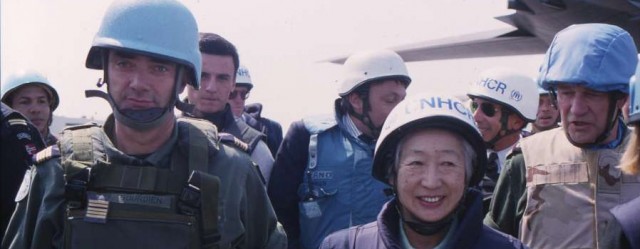Home > About Us > The High Commissioner > Previous High Commissioners
Previous High Commissioners

From van Heuven Goedhart to Guterres
The UN refugee agency has had 10 High Commissioners since it was established in 1950, starting with Gerrit Jan van Heuven Goedhart, a Dutch journalist and lawyer who died suddenly in the job in 1956. His achievements on behalf of refugees were acknowledged in 1954, when UNHCR was awarded its first Nobel Peace Prize. He was followed by another former journalist, Switzerland's Auguste Lindt, who soon faced the test of helping some 200,000 Hungarians fleeing their country as a result of the Soviet suppression of the 1956 Hungarian uprising. Lindt was followed by another Swiss national, Félix Schnyder, who handed over to Sadruddin Aga Khan of Iran in 1965. The Aga Khan spent 12 years at the UNHCR helm, longer than anyone else, and he also worked for the organization before taking the top job. The next High Commissioner, Poul Hartling, was the first of three former prime ministers to lead the agency - Rudd Lubbers and the current High Commissioner, António Guterres, also led the governments of their respective home countries, the Netherlands and Portugal. Hartling's eight-year term was marked by the mass exodus in Indochina and major operations in the Horn of Africa and Central America, as well as for Afghan refugees in Asia. During his stewardship, UNHCR was awarded the Nobel Prize for a second time in 1981. Jean-Pierre Hocké, another Swiss man, was High Commissioner from 1986-89, followed by the brief stint of Norwegian politician Thorvald Stoltenberg. In 1990, Sadako Ogata became the first female High Commissioner for Refugees and she led the organization for 10 years. Her tenure was marked by crises in the Balkans and the Great Lakes and the repatriation of 360,000 refugees to Cambodia. She was followed by Lubbers and Guterres.